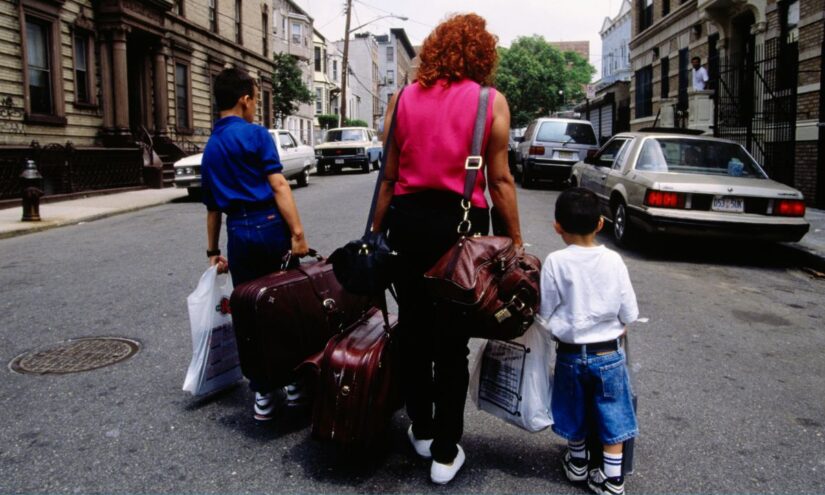Get stories like this delivered straight to your inbox. Sign up for The 74 Newsletter
When she escaped her abusive partner, a Delaware mother left everything behind but her children. She didn’t get to pack what was important to her or her kids, including a copy of her son’s Individualized Education Plan.
Her son spent four months in New York City schools without receiving his legally required services while school officials developed a new IEP from scratch and family memory. Asking his school back in Delaware for a copy would have been too risky – the abuser could contact the school to figure out where they’d fled.
The family, whose names are being withheld for safety reasons, is one of many whom school systems have failed to serve properly due to a lack of clear safety plans and policies for families experiencing domestic violence, a persistent driver of homelessness.
Nationwide, at least 80% of women with children experiencing homelessness also experienced domestic violence, and over half say it was the immediate cause. In New York City alone, roughly 40,000 people became survivors in 2022.
In fact, more families entered the city’s Department of Housing Services shelters due to domestic violence (20%) than evictions (11%).
With at least 146,000 children experiencing homelessness in New York City and domestic violence on the rise, advocates, experts and families are teaching students about healthy relationships and urging schools to develop clear safety plans with shelter staff to better support survivors.
Even when families disclosed instances of domestic violence to schools and asked them to alter contact information, New York City schools failed to immediately update student profiles and contacted dangerous individuals on several occasions. Some survivors were forced to seek emergency shelter and school transfers out of their borough as a result, said Janyll Canals-Kernizan, director of the Robin Hood project with Advocates for Children of New York.
Some school staff have misguidedly asked survivors for confidential domestic violence shelter addresses, or refused to set up busing because they claimed P.O. box numbers are unacceptable. The lack of clear guidance has produced harmful ripple effects on families, including limiting kids’ ability to get to school and feel safe and stable once there, as well as parents’ ability to attend work.
“I’ve had families have to pick between participating in an economic empowerment program or taking their kid to school because the bus has never been set up and now they can never get to their economic empowerment program, which means then that they can never really establish independence and get out of shelter … All of that is interrelated in a way that we don’t talk about,” said Canals-Kernizan, an attorney who represents families facing school-based discrimination.
Beyond the challenge of affording housing, survivors navigate “long lasting” consequences of physical, psychological and financial abuse, which requires individualized case management and makes finding secure housing even more difficult, said Gabbi Sandoval Requena, director of policy and communications with New Destiny Housing, a nonprofit providing permanent housing and social services to survivors in NYC.
“Abuse and gender-based violence is really all about power and control. It usually starts gradually, and it’s really hard for a survivor to sometimes acknowledge that they’re in a situation of abuse,” she told The 74.
Abusers often isolate their partner from finances, managing any money they earn from work but not letting them access accounts. Some use the survivors’ Social Security number to open credit cards without their consent, destroying their credit score. The survivors may have no history of being on a lease, leaving them unable to provide rental references.
These are the “consequences that are often undealt with because they’re in crisis mode, trying to just survive day by day,” Sandoval Requena said.
Today, nearly all residents in NYC’s Human Resources Administration-run domestic violence shelters – the largest network in the country – are Black and brown families with children. The facilities are often at capacity, housing about 10,000 people, and have a stay limit of 180 days, while offering specialized programs for kids and parents.
In the Department of Housing Services shelters, open to all NYC residents without homes, about a third are families with kids. Altogether, one in three of New York state’s unhoused residents are children.
Statewide, one in three New Yorkers experience intimate partner abuse, considered a leading cause of traumatic brain injuries by the Centers for Disease Control and Prevention. In 2023, 10% more people were entered into New York’s Domestic Violence Registry for orders of protection. Around the same time, homelessness doubled.
Although any children experiencing homelessness should have protections to accessing stable education under the federal McKinney-Vento Homeless Assistance Act, in reality, their experiences vary.
Families facing shelter limits are moved frequently, sometimes across boroughs, posing an inordinate strain on childrens’ education. From safety scares and hour-long trains to needing to work to help support the family, unhoused students comprise a disproportionate amount of chronically absent students. Overall, about 43% New York City students missed 10% or more of the 2022-23 school year. For students experiencing homelessness, the rate was 67%.
One Brooklyn mother and survivor from the Caribbean recognized how disruptive school transfers would be on top of her family’s housing instability. She insisted on keeping her son in the same school even as they moved among shelters across the boroughs four times.
“I experienced domestic violence all my life,” said the 45-year-old survivor, whose name is being withheld for safety reasons. She witnessed her father abuse her mother, and left her partner her first year in the United States.
She and her “energetic” son lived in shelters for three years, moving every six months. Twice, seeing her abuser outside of the domestic violence shelters triggered emergency transfers.
With her then 5-year old in tow, she’d leave her upper Manhattan shelter by 6 a.m. on the dot to get to his Brooklyn elementary school by 7:45.
She never received any MetroCards from the schools or shelters, commonly provided for free. Over the years, she had to attend housing court and incurred three fare evasion tickets, which her mother helped pay from the Caribbean.
Against the urging of the shelter staff, she insisted on keeping her son, now 9, in his Brooklyn school. Changing schools “would not have done him any good,” she said. “We all need stability, especially children.”
With the help of a case manager from New Destiny Housing, the mother navigated the process of applying for apartments until securing one of the nonprofit’s 377 units. “She stood by my side, all the way. She took me very seriously,” the survivor said, adding that each time they checked in biweekly, she felt certain something would get done.
At New Destiny Housing, over 1,000 New Yorkers receive on-site services like financial coaching, food pantries and art therapy. Family residents can opt-in for field trips to Broadway shows, baseball games and museums – efforts to challenge the cycle of abuse and “for kids to be kids and to enjoy the joy of living in New York City, something that they never had access to before,” said Sandoval Requena.
The survivor said that her son is now “outspoken … he knows what he wants.” She attends support groups with other families, hearing and sharing what they’ve gone through, and credits the case manager as critical in their journey.
Their new home is about a 25-minute commute from her son’s school, a far cry from the nearly two-hour, one-way commute from their Manhattan shelters.
“I’m there at every PTA meeting, every parent teacher conference. Every show that they are having, every Funky Friday. I am here for every single thing.”
Get stories like these delivered straight to your inbox. Sign up for The 74 Newsletter








